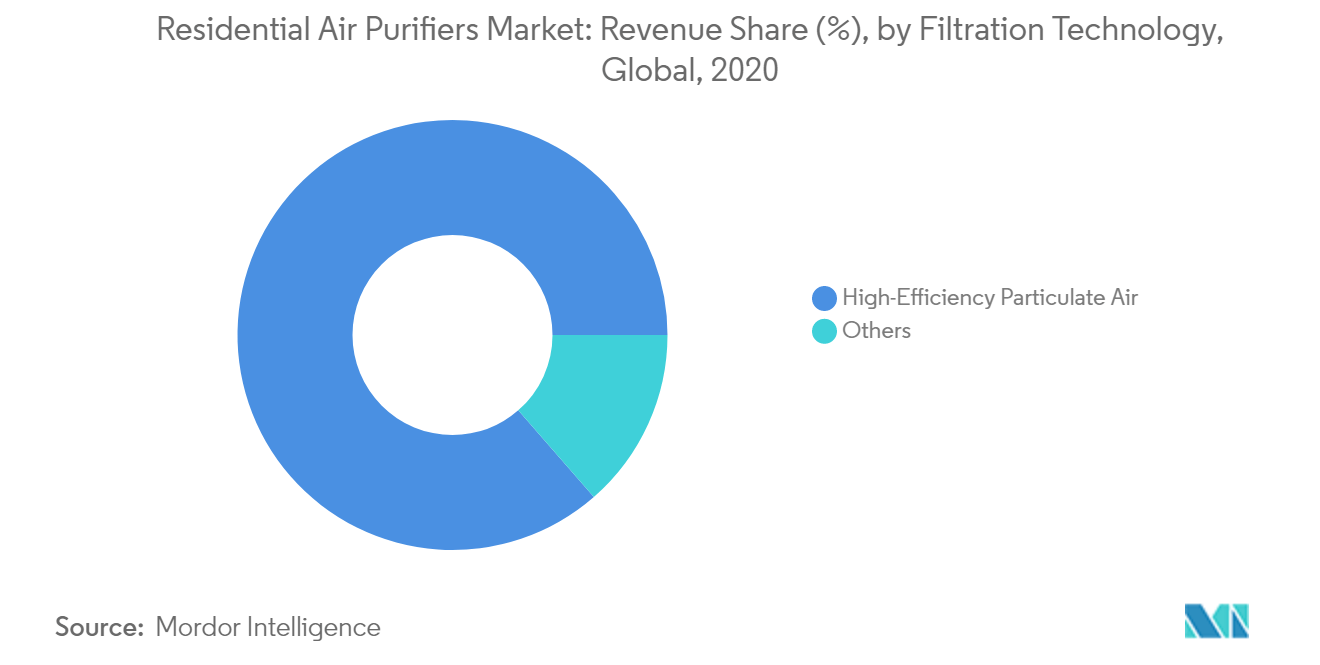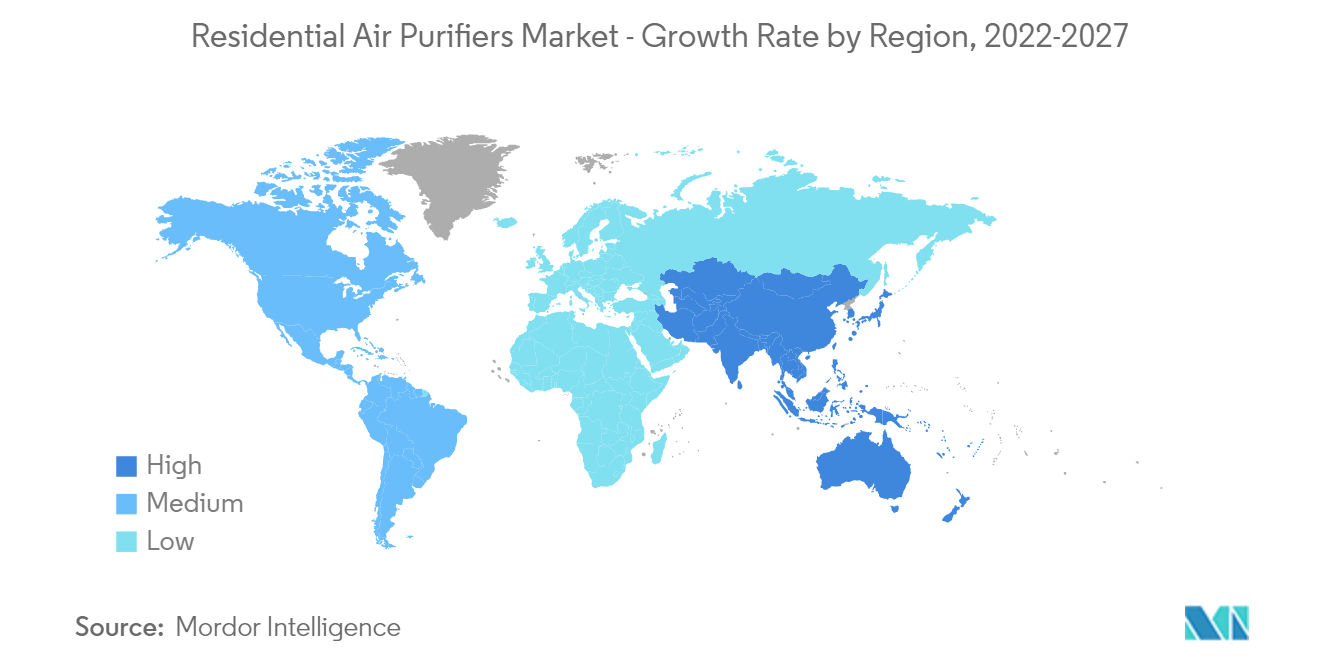Market Trends of Residential Air Purifiers Industry
This section covers the major market trends shaping the Residential Air Purifiers Market according to our research experts:
High-efficiency Particulate Air (HEPA) Filtration Technology to Dominate the Market
- In 2021, HEPA-based air purifiers occupied more than half of the total residential air purifier sales by revenue since they removed particulate matter (PM 2.5 and PM 10) effectively. HEPA filters capture large airborne particles, such as dust, pollen, mold spores, animal dander, and particles containing dust mites and cockroach allergens.
- HEPA filters are a type of extended surface filter with a larger surface area and higher efficiencies for removing larger and smaller airborne particles. Moreover, these air filters remove respirable particles more efficiently than pleated filters.
- The two most common standards required for HEPA air purifiers include the capability to remove particles, i.e., 99.95% (European Standard) or 99.97% (ASME standard), which have a size greater than or equal to 0.3 micrometers.
- In 2021, high-efficiency particulate air (HEPA) filters accounted for more than 80.0% of the market. They are expected to continue their domination of the market in the coming years.
- Hence, HEPA filter-based air purifiers are expected to witness significant demand from the residential and commercial sectors during the forecast period.

Asia-Pacific to Dominate the Market
- Asia-Pacific dominated the market in 2021, and it is expected to continue its dominance in the forecast period. On a country level, China is the largest market for residential air purifiers. The market in China is dominated by international brands, and its market share far exceeds that of domestic brand products.
- Rapid industrialization and urbanization are leading to high pollution levels in major cities across China and India. To tackle the growing concern, governments are taking necessary steps. In China, the Ministry of Environmental Protection imposed stringent anti-pollution targets on 28 cities around Beijing, thus, increasing the number of air purifier installations in most residential, commercial, and industrial buildings across these cities.
- The Chinese air purifier market is significantly less penetrated, although it is expected to grow at a significant rate. In July 2021, Olansi, a leading manufacturer of eco-friendly home appliances, launched its latest selection of air purifiers that are designed specifically for large indoor spaces. The company's products include smart air purifiers, PM 1.0 air purifiers, PM 2.5 air purifiers, desktop air purifiers, and small air purifiers. Such innovative technology inventions are expected to aid the growth of the market in the coming years.
- Many Asian countries are yet to develop comprehensive standards for air purifiers. For example, in India, where many metropolitan cities record air pollution levels far higher than acceptable limits, no clean air purifier standards exist. Also, globally, the Air Quality Index (AQI) of 20 is considered good, but in India, an AQI of 50 is deemed safe.
- Therefore, in the countries where the comprehensive standards for residential air purifiers do not exist, the market is being flooded with cheap non-standard air purifiers, which is expected to make the market difficult for better quality products. However, the market is expected to grow significantly in the coming years.


